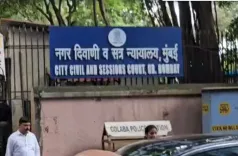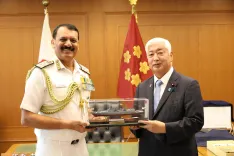Did the Punjab Cabinet Just Restructure Rural Development Blocks?

Synopsis
Key Takeaways
- Restructuring aligns rural development blocks with district boundaries.
- Aims to enhance administrative efficiency.
- Improves coordination between block and district administrations.
- Facilitates better service delivery for citizens.
- Will take effect after official notification.
Chandigarh, July 30 (NationPress) In a noteworthy administrative reform aimed at enhancing governance and service delivery within rural regions, the Punjab Cabinet, under the leadership of Chief Minister Bhagwant Mann, has approved the restructuring of rural development blocks to better align them with district boundaries, thereby boosting administrative efficiency.
This decision was made during a gathering of the Council of Ministers held here.
A representative from the Chief Minister’s Office stated that the restructuring aims to synchronize the jurisdiction of development blocks with the current district boundaries, particularly benefiting the districts of Sangrur, Malerkotla, Fazilka, Ferozepur, Mohali, and Patiala.
This realignment is set to ensure improved coordination between block-level and district-level administrations, streamline the planning and execution of rural development initiatives, and eliminate administrative overlaps that frequently result in delays and inefficiencies.
The restructuring process was conducted after a thorough review of the existing administrative boundaries and operational needs.
All requisite legal and administrative protocols have been adhered to during the reorganization. Through this initiative, the state government aims to bolster planning and monitoring mechanisms at the district level, facilitate seamless integration of block and district-level data and decision-making, improve accessibility to services for citizens and Panchayati Raj Institutions, and enhance overall efficiency in executing both central and state-sponsored rural development programs.
The newly structured development blocks will take effect once the notification is published in the official gazette.
In addition, the government has decided to host four religious yatras and major events in November to commemorate the 350th martyrdom anniversary of Sri Guru Tegh Bahadur.
Cabinet Minister Harjot Singh Bains, Harbhajan Singh, Tarunpreet Sond, and Deepak Bali, Advisor of the state Tourism and Cultural Affairs Department, who participated in the initial meeting at Virasat-e-Khalsa on Wednesday, provided detailed insights regarding the planned religious ceremonies.







